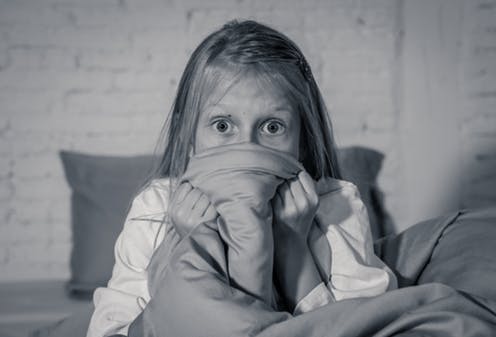Insomnia: how to help children (and their parents) get a good night’s sleep
Michael Gradisar & Rachel Hiller, The Conversation

As the day ends and evening begins, some parents are getting ready for a serious task. Not because they are preparing for a late shift at work, but because they are about to confront the battle of their children’s bedtime.
And we’re not talking about infants or toddlers. These are school-aged children who suffer from insomnia.
Until fairly recently, insomnia was largely thought of as an adult sleep problem. Then, in 2014, the diagnosis of insomnia in adults was combined with the behavioural sleep problems seen in children. This means that children can now be diagnosed with an insomnia disorder.
There are a number of symptoms of insomnia that overlap between children and adults, including difficulties in falling – or staying – asleep. To be diagnosed with insomnia, these difficulties must persist for at least three nights a week and last for at least three months.
Another key aspect of a sleep problem is that it is causing some kind of significant disruption to the child’s and family’s life – that the sleep problem affects normal functioning. Examples of this might include night times becoming unmanageable or very stressful (for the child and parent) or it might be that they are sleep deprived during the day and not coping well at school.
The key difference between insomnia in adults and children is that to be able to fall asleep or stay asleep, children often require “special conditions”. This usually means they need their parents nearby.
Continue reading on theconversation.com